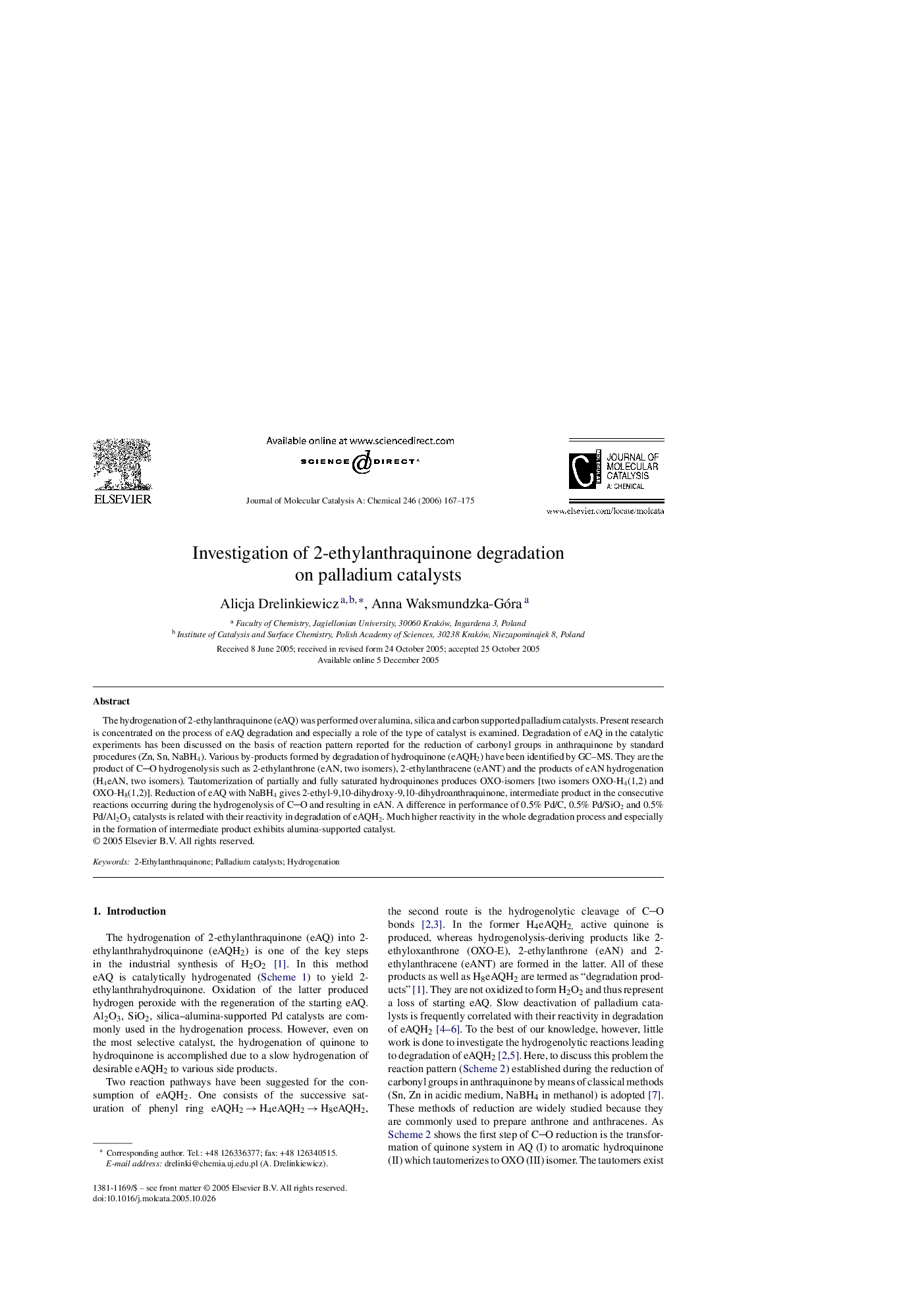| کد مقاله | کد نشریه | سال انتشار | مقاله انگلیسی | نسخه تمام متن |
|---|---|---|---|---|
| 69064 | 48529 | 2006 | 9 صفحه PDF | دانلود رایگان |

The hydrogenation of 2-ethylanthraquinone (eAQ) was performed over alumina, silica and carbon supported palladium catalysts. Present research is concentrated on the process of eAQ degradation and especially a role of the type of catalyst is examined. Degradation of eAQ in the catalytic experiments has been discussed on the basis of reaction pattern reported for the reduction of carbonyl groups in anthraquinone by standard procedures (Zn, Sn, NaBH4). Various by-products formed by degradation of hydroquinone (eAQH2) have been identified by GC–MS. They are the product of CO hydrogenolysis such as 2-ethylanthrone (eAN, two isomers), 2-ethylanthracene (eANT) and the products of eAN hydrogenation (H4eAN, two isomers). Tautomerization of partially and fully saturated hydroquinones produces OXO-isomers [two isomers OXO-H4(1,2) and OXO-H8(1,2)]. Reduction of eAQ with NaBH4 gives 2-ethyl-9,10-dihydroxy-9,10-dihydroanthraquinone, intermediate product in the consecutive reactions occurring during the hydrogenolysis of CO and resulting in eAN. A difference in performance of 0.5% Pd/C, 0.5% Pd/SiO2 and 0.5% Pd/Al2O3 catalysts is related with their reactivity in degradation of eAQH2. Much higher reactivity in the whole degradation process and especially in the formation of intermediate product exhibits alumina-supported catalyst.
A role of the type of catalyst (Pd/Al2O3, Pd/SiO2, Pd/C) in degradation process during the catalytic hydrogenation of 2-ethylanthraquinone (eAQ) is examined. Degradation of eAQ in the catalytic experiments has been discussed on the basis of reaction pattern for the reduction of CO in anthraquinone by standard procedures (Zn, Sn, NaBH4). By-products formed by tautomerization of hydroquinones (OXO-isomers), hydrogenolytic cleavage of CO (2-ethylanthrone and derivatives, 2-ethylanthracene) and intermediate product (2-ethyl-9,10-dihydroxy-9,10-dihydroanthraquinone), precursor of 2-ethylanthrone are identified. Much higher reactivity in the whole degradation process and especially in the formation of intermediate product exhibits Pd/Al2O3. Figure optionsDownload as PowerPoint slide
Journal: Journal of Molecular Catalysis A: Chemical - Volume 246, Issues 1–2, 1 March 2006, Pages 167–175